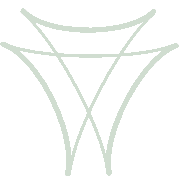On spacecraft carrying optical payloads, the ultimate objective of the pointing control system is to ensure that the optical payload obtains images of some required image quality. Image quality can be measured by several parameters such as resolution, which are linked to the Optical Transfer Function (OTF) or its magnitude and phase, the Modulation Transfer Function (MTF) and Phase Transfer Function (PTF).
An optical system engineer allocates a portion of the system OTF (or MTF) to an Image Motion OTF (IM OTF). The IM OTF is the allowable degradation of the image due to image motion. The IM OTF places a requirement on the spacecraft pointing control system, including structural response of the coupled payload and bus. A pointing requirement may be imposed at a physical bus-payload interface. Because this ignores effects on modal frequencies and damping in the payload and bus due to structural coupling, pointing requirements placed on a physical bus-payload Interface are generally invalid unless the structural modes of the optical payload are above all disturbance frequencies, which is rarely the case.
Line-of-Sight Pointing
The article Image Motion OTF Analysis defines the line of sight to a point source as the location of the maximum of the Point Spread Function (PSF), which is the image of the point source on the focal plane. The Image Motion OTF is the spatial frequency response of the optical system to motion of the PSF. Ideally a structural model of the optical system is needed to predict and quantify image motion. In situations where an optical model is not available or cannot be provided, a similar design may be available, a pinhole camera model may be used, or disturbance response data can be given to the optical engineers for evaluation.
Pointing requirements have traditionally referred to "stability" and "jitter", which have not been defined consistenly. Statistical image motion OTFs for displacement (shift), smear, and jitter are parameterized by means and covariances of pointing motions given by the Pointing Performance Metrics.
Pointing Performance Metrics (PPM)
The Pointing Performance Metrics (PPM) are means and covariances that parameterize the Statistical Image Motion Optical Transfer Functions (Statistical IM OTFs). These means and covariances are computed from the frequency-weighted Power Spectral Density (PSD) of the image motion. The frequency weightings are specific to the displacement, smear, and jitter IM OTFs, and are functions of the exposure time of the optical sensor. The PSD is computed from the closed-loop controller and structural response to disturbance inputs from various spacecraft components such as reaction wheels, solar array actuators, cryo coolers, etc. The disturbance response is computed using one or more analysis methods:
- Frequency response
- Lyapunov solution
- Time response -- Fourier transform, Autocorrelation
Frequency-domain analysis is preferred because it is faster and more accurately computed than a time response, and more information about the system is readily availablel in the frequency response. Transient and nonlinear responses may be more easily evaluated by using a time-domain analysis. The Lyapunov solution is for broadband noise disturbances.
You can find out more about Pointing Performance Metrics in my journal article and citations therein:
M. E. Pittelkau and W. G. McKinley, "Optical Transfer Functions, Weighting Functions, and Metrics for Images with Two-Dimensional Line-of-Sight Motion", Optical Engineering, SPIE, Volume 55, Issue 6, June 2016. 18 pages.
DOI: http://dx.doi.org/10.1117/1.OE.55.6.063108 [Open Access]
Disturbance Modeling and Structural Response Analysis
Once the PSD of the image motion is obtained, the PPMs can be evaluated for a set of exposure times. A PSD of motions at other locations of interest such as at the star trackers, gyros, accelerometers, clocks, etc. can also be evaluated. The PSD of all disturbance sources is usually obtained from a semi-analytical (hybrid) model in which we have a good physical model whose parameters are derived from test data. A structural model is also obtained from extensive modeling and validation testing. The PSD of the response to disturbances is then easily evaluated. There are techniques to do this evaluation efficiently, even for a large number of structural modes and varying disturbance frequencies. The evaluation can be done efficiently also for a variety of model uncertainty factors (MUFs).
Relative and Cumulative Contribution Analysis
I have developed techniques to analyze the Relative and Cumulative Error Contributions of disturbance sources to pointing performance, These techniques provide an effective and efficient means to evaluate and update pointing system performance and sensitivities to component-level disturbances. The relative contributions to each PPM from each disturbance source are easily evaluated for various operating conditions and exposure times to identify
- worst offenders
- sensitive frequency intervals
- worst-case sensitivities
- MUF sensitivity
- cumulative power over frequency
- power in a frequency interval
- relative power in a frequency interval
This analysis can help the attitude control system engineer to focus on making improvements where they will be the most effective and to focus on model uncertainties that have the greatest effect on the pointing performance metrics.
Engineering Support for Optical Payload and Pointing Performance Analysis
The foregoing methodologies are being adopted on many spacecraft programs where high performance is required. My engineering services include helping you define or interpret image motion and pointing performance requirements written in terms of Image Motion OTFs or in terms of the Pointing Performance Metrics displacement, smear, and jitter. I can also help your engineering team evaluate the Image Motion OTFs and the Pointing Performance Metrics.
Contact me if you need engineering support or consultation on image motion and pointing performance requirements and analysis, or to arrange a workshop presentation.
Workshop on Optical Transfer Functions and Pointing Performance Analysis
I can present an 8-hour workshop on Optical Transfer Functions and Pointing Performance Analysis to your engineers. The workshop includes a primer on optical system performance, methods to evaluate the Image Motion OTFs, a discussion of image motion and pointing requirements, techniques to evaluate Pointing Performance Metrics that parameterize the Image Motion OTFs, and the relative and cumulative contribution analysis.
Copyright © 2021 by Mark E. Pittelkau and Aerospace Control Systems, LLC

